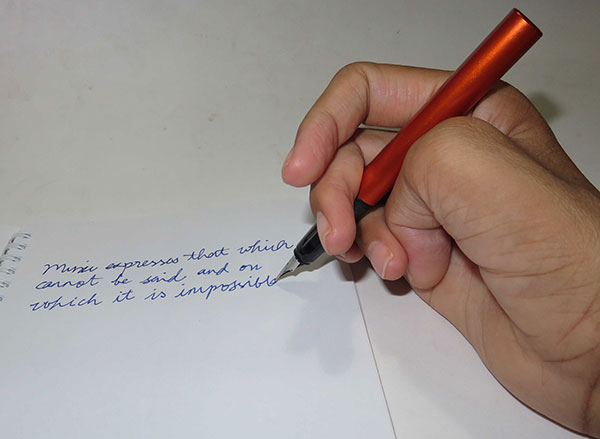 “I WANT to be able to grip properly when I shake hands. Is there a splint that can open up my thumb for that?” I asked an occupational therapist over a coffee break at a training session I was conducting.
“I WANT to be able to grip properly when I shake hands. Is there a splint that can open up my thumb for that?” I asked an occupational therapist over a coffee break at a training session I was conducting.
That is one of the advantages of my job. I get to meet people from all walks of life and very often professionals whom I can ask for casual advice. They are also very willing to help in any way they can.
She held up both my hands and examined them. “We can make something for this,” she said. “Come and see me at my office.”
I told her I would make an appointment to see her soon. I was excited over the prospect of being able to give a better handshake.
I have long accepted my physical limitations. After living with spinal cord injury for so many years, I know perfectly well what I can do with my hands and what I cannot. Human ingenuity has led to the invention of adaptive devices that make performing difficult tasks easier. Simple tools like cutlery designed for hands with a weak grip like mine do make a meaningful difference.
In many ways, I am happy with how far I have come in learning to live with my paralysis except for one thing. Other than the very obvious wheelchair indicating my issue with mobility, the other apparent sign of my physical condition is the shape of my hands. The paralysis has caused them to become clawed. I can no longer stretch my fingers straight.
My thumbs are permanently bent inwards. They are totally paralysed for all intents and purposes.
I have lost the opposable thumb function, essential for grasping and handling objects. While I can still hold and manipulate larger objects, smaller items like coins and pills are problematic.
There was once when I spent 20 minutes bending over the wheelchair trying to retrieve a coin that had dropped onto the floor. Without the use of my thumb, it was practically impossible to pick it up. In the end, I nudged the coin onto a piece of card and carefully lifted both. I had to take a long rest afterwards to recover from the exhaustion resulting from a seemingly simple effort for most people.
Compared to a pair of non-impaired hands, mine look deformed. The muscles in the hands and wrists have atrophied. I clasp onto objects awkwardly. From holding a spoon to eat, to writing with a pen, to typing on the computer keyboard, my movements appear unnatural.
I thought I had already gotten used to how my hands look. After all, I have been living with it for three decades. However, in recent years I have become self-conscious of the inelegant ways I handle objects in social settings, especially when I eat, and of course the unwieldy handshakes with new and old acquaintances.
My work entails not only training but also some socialising and meetings for preliminary discussions and such. Normally, hand gestures are used to complement conversations and emphasise important points. I try to avoid this as much as possible because I find the way my hands flail about when I gesticulate distracting.
Studies have shown that a firm handshake is a sign of confidence. Mine was more like the other person holding my fingertips and swaying them around because I could not stretch out my thumbs for a good grip. That was the reason I was looking for a splint. I wanted to exude that air of confidence when shaking hands.
This feeling of inadequacy came about after seeing many of the photos taken of me in awkward poses. Call me vain or call me shallow but deep inside, the desire to become as ordinary as possible still burns strong. This is a contradiction of the empowered and confident image I project. I thought I had gotten over this stage of being ill at ease with my physical attributes. Obviously I was mistaken.
I have pondered over ways to make the way I handle things less obvious. There is only so much adaptive devices can do to help me in my tasks. Concealing awkward movements is not one of them. As much as I would like to appear more ‘normal’, I realise I have to accept there is nothing much I can do. I will have to live with these deformed hands whether I like them or not.
I have also thought about the occupational therapist’s offer many times. I have yet to make that appointment with her. I do not think I ever will. This is who I am and how I have become. I have to learn to accept myself, warts and all. If I cannot accept myself as I am, how can I expect other people to accept me? This is one side of me that still needs some working on. In time, I believe I can triumph over this as well.
